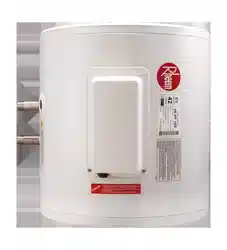Loading ...
Loading ...
Loading ...

51
INSTALLATION INSTRUCTIONS
Gas Supply (cont.)
Gas Supply
Gas Piping
Pipe-Sizing Procedure
The gas supply system must be properly sized
to ensure the proper operation of this tankless
water heater as well as all the gas appliances on
the system. Failure to ensure the gas system,
(meter, regulators, and piping) are properly sized
could result in improper operation of this or other
gas appliances. Insufficient gas pressure/supply
can cause pilot outages, lockouts, or operating
conditions that could lead to an appliance failure,
improper combustion, carbon monoxide, sooting,
or fire. Gas line sizing is based on gas type, the
pressure drop in the system, the gas pressure
supplied, and the gas line type. For gas pipe sizing
in the United States, refer to the National Fuel Gas
Code, (NFPA 54, ANSI Z223.1). For Canadian gas
pipe sizing, refer to the Natural Gas and Propane
Installation Code CAN/CSA B149.1.
These simplified instructions only address low
pressure gas systems using Schedule 40 Metallic
Pipe (Black Iron). For hybrid gas systems,
high pressure main lines with regulators at the
appliances, gas systems piped with corrugated
stainless steel tubing (CSST), or Propane gas
systems.
Determining the required regulator
and gas meter size.
Find the BTU capacity of each appliance on the
system. This information is located on a rating label
attached to the appliance. Total the BTU of all the
appliances together and divide that by the heating
value of the fuel (for natural gas the average is
1,024 or 2,546 for propane). This will give you the
total cubic feet per hour of gas required for the
system.
At your gas meter/regulator there will be a rating
plate that gives the cubic feet per hour capacity
of that equipment. If the total gas required for the
system is greater than the rating of the meter/
regulator then the local gas company will need
to be contacted in order to upgrade the meter/
regulator for the system.
Determining the required pipe size.
The gas system is designed to operate at a certain
maximum pressure drop. A pressure drop greater
than what is permissible can cause operational
issues with the gas appliances. The National Fuel
Gas Code (NFPA 54, ANSI Z223.1 2012) allows
for three pressure drop levels, a 0.3 inch W.C.,
(see table 2); a 0.5 inch W.C., (see table 3) and
a 3.0 inch W.C., (see table 4) pressure drop for
natural gas. Only a 0.5 inch W.C. pressure drop is
allowable with Propane (see table 5). For Canadian
installations the maximum allowable pressure drop
is 0.5 inch W.C., (see table 3).
Measure the inlet gas pressure to the system using
a manometer. For Natural Gas, if the inlet pressure
is less than 8.0 inches W.C. then use Table 2 or 3
for your gas pipe sizing. Table 4 can only be used if
the inlet gas pressure is 8.0 inches W.C. or greater.
Table 4 cannot be used for Canadian installations.
The gas piping system consists of a main trunk
line that runs from the meter/regulator and branch
lines that run from the trunk line to the individual
appliances. A branch may carry gas for more than
one appliance.
The trunk line must be sized to carry the entire
load of all the gas appliances on the system. As
with determining the meter/regulator size, total the
BTU of all the appliances together and divide that
by the heating value of the fuel (for natural gas
the average is 1,024 or 2,546 for propane). This
will give you the total cubic feet per hour of gas
required for the trunk line. Measure the total length
of the line Refer to Table(s) 2, 3, or 4 and find the
number closest to but higher than the total cubic
feet per hour requirement calculation. This will tell
you the minimum size that the trunk line must be.
Each branch line must be sized to carry the load
of the appliance(s) attached to it. If more than one
appliance is on a branch total the BTU and as with
the trunk line divide that by the heating value of
the fuel. Refer to Table(s) 2, 3, or 4 and find the
number closest to but higher than the total cubic
feet per hour requirement calculation for the branch
and appliance(s). This will tell you the minimum
size for that branch line and appliance.
Cubic Feet
Per Hour (CFH) =
Gas Input of
Water Heater (BTU/HR)
Heating Value of Gas (BTU/FT
3
)
Loading ...
Loading ...
Loading ...
